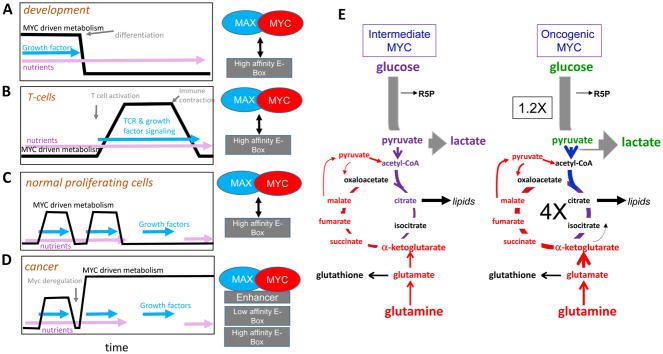Figure 5.

The effect of nutrient and growth factor availability on MYC driven metabolism. A) During cellular differentiation, loss of growth factor stimulation can turn off MYC- driven metabolism even in the presence of nutrients. B) In T cells, receptor stimulation and growth factors can drive MYC signaling, but withdraw of receptor stimulation and checkpoints turn off MYC-driven metabolism even in the presence of nutrients. C) In normal proliferating cells, MYC-driven metabolism is activated in the presence of both nutrients and growth factors, but individual exposure to nutrients or growth factors is not sufficient to activate MYC-driven metabolism. D) In cancer, MYC deregulation and loss of checkpoints leaves cells unable to turn off MYC-driven metabolism independent of growth factors and nutrient availability. The inability to turn off MYC-driven metabolism creates therapeutic vulnerabilities to metabolic inhibitors. E) Comparison of glucose and glutamine metabolism of cells expressing intermediate levels of MYC and oncogenic levels of MYC shows oncogenic levels of MYC cause small increase (1.2 fold) in lactate production and a large increase (4 fold) in TCA cycle flux (197).
